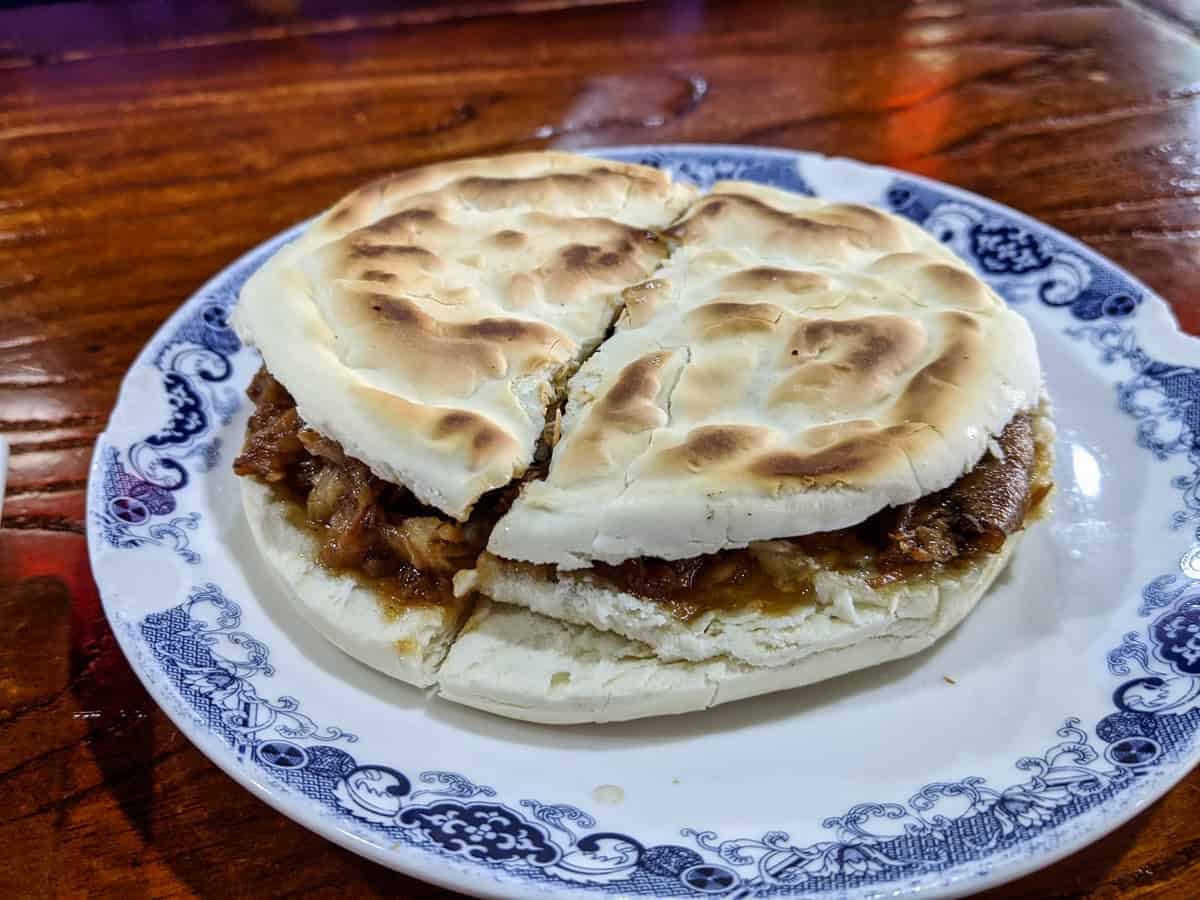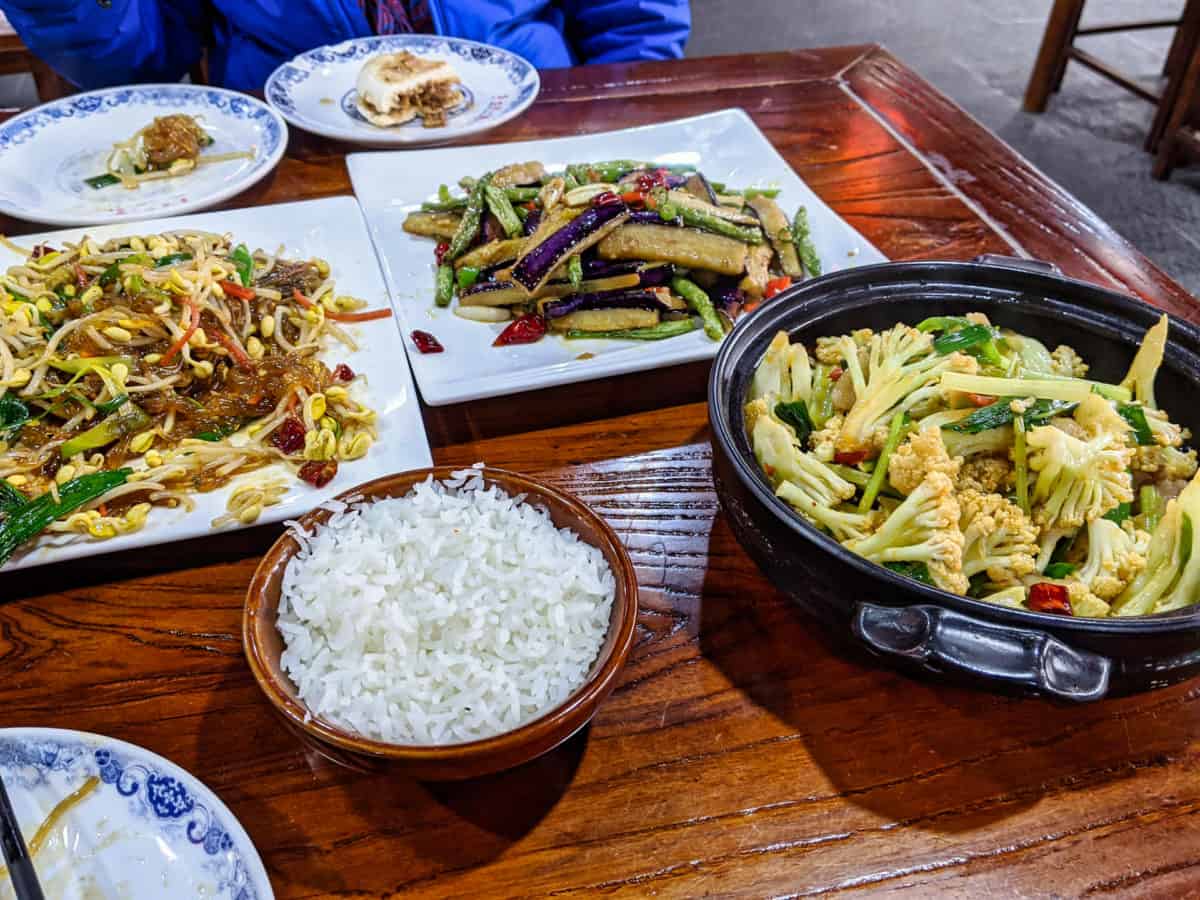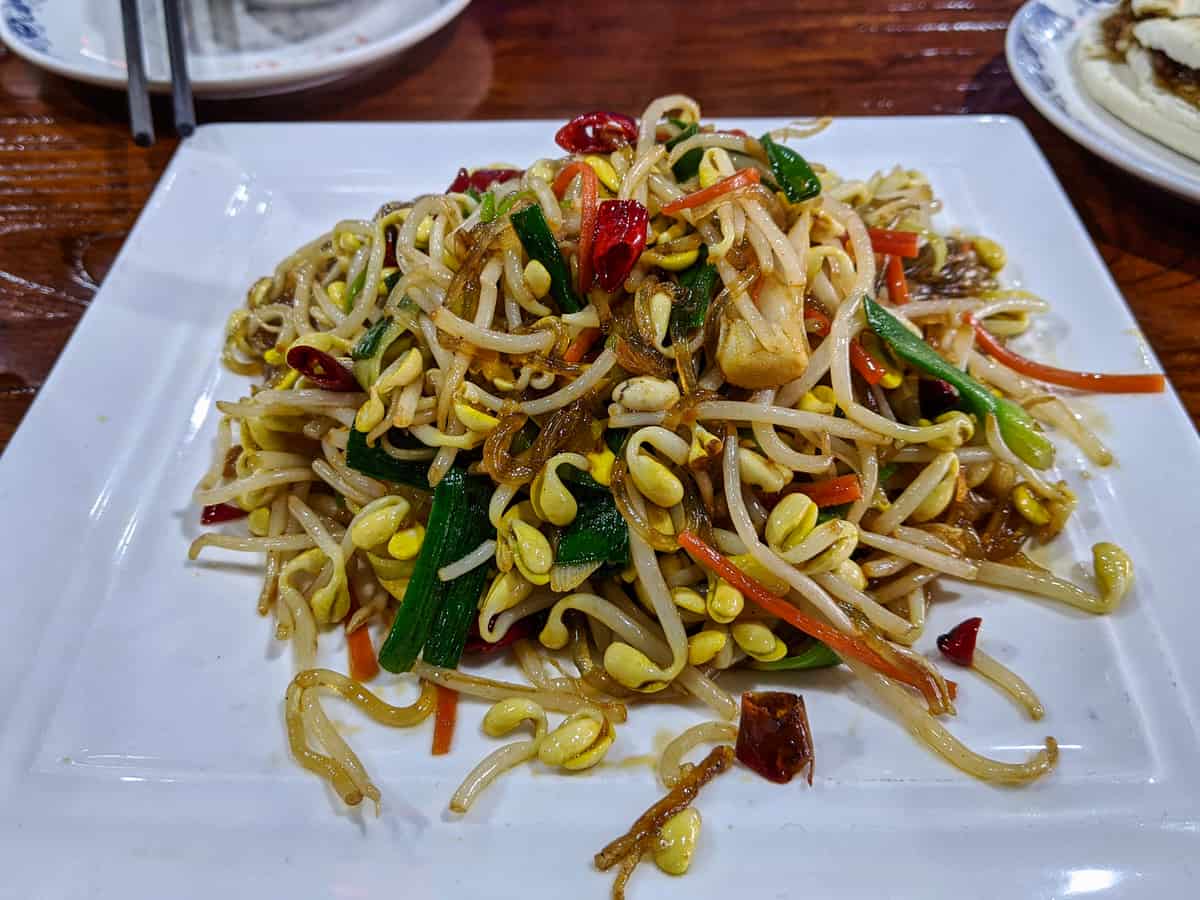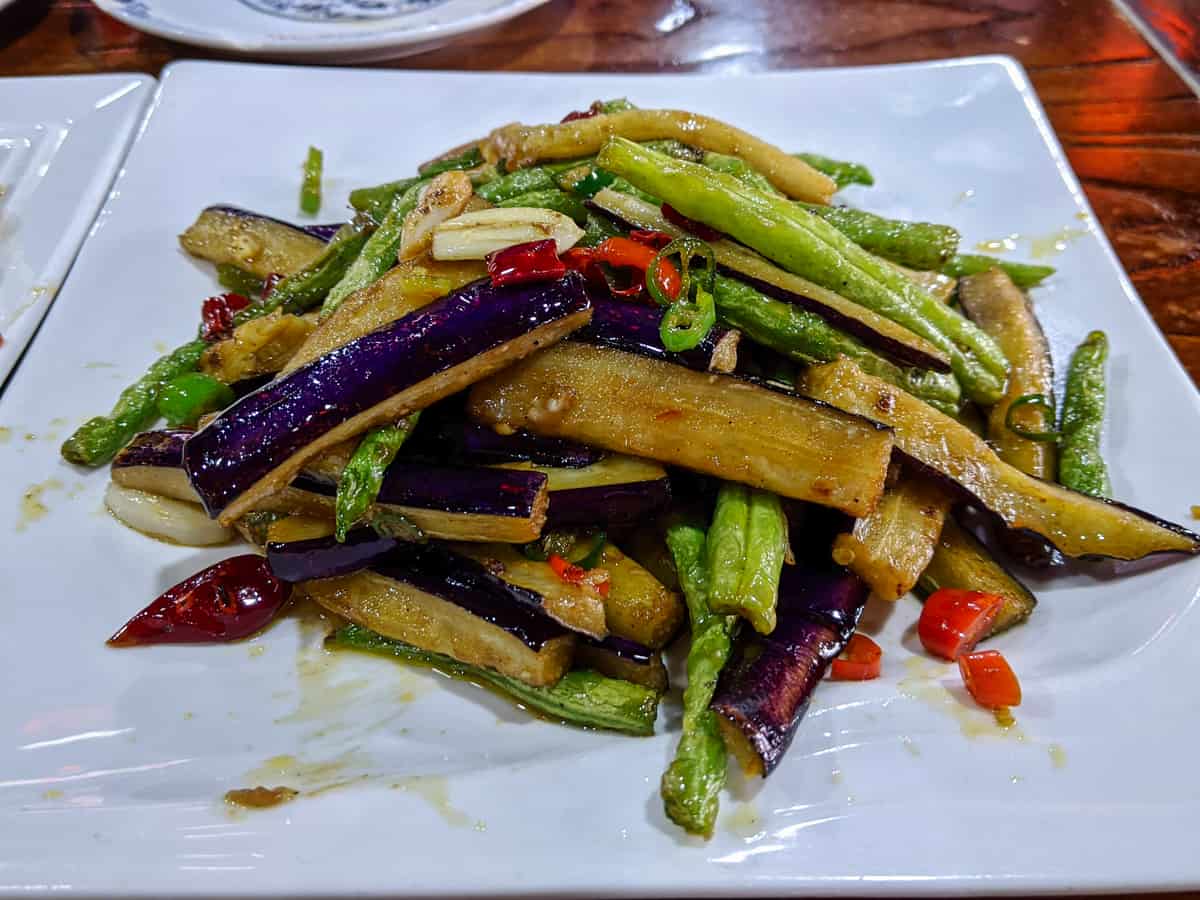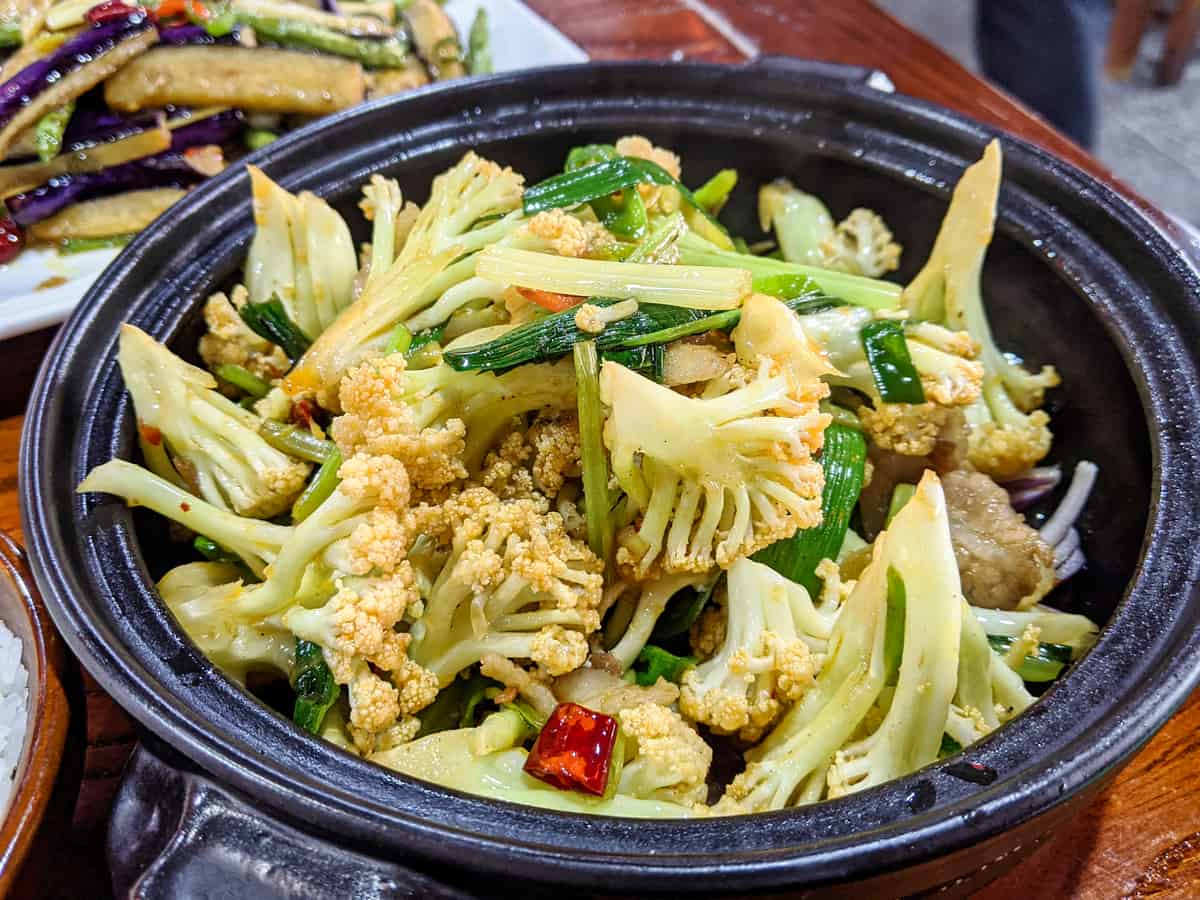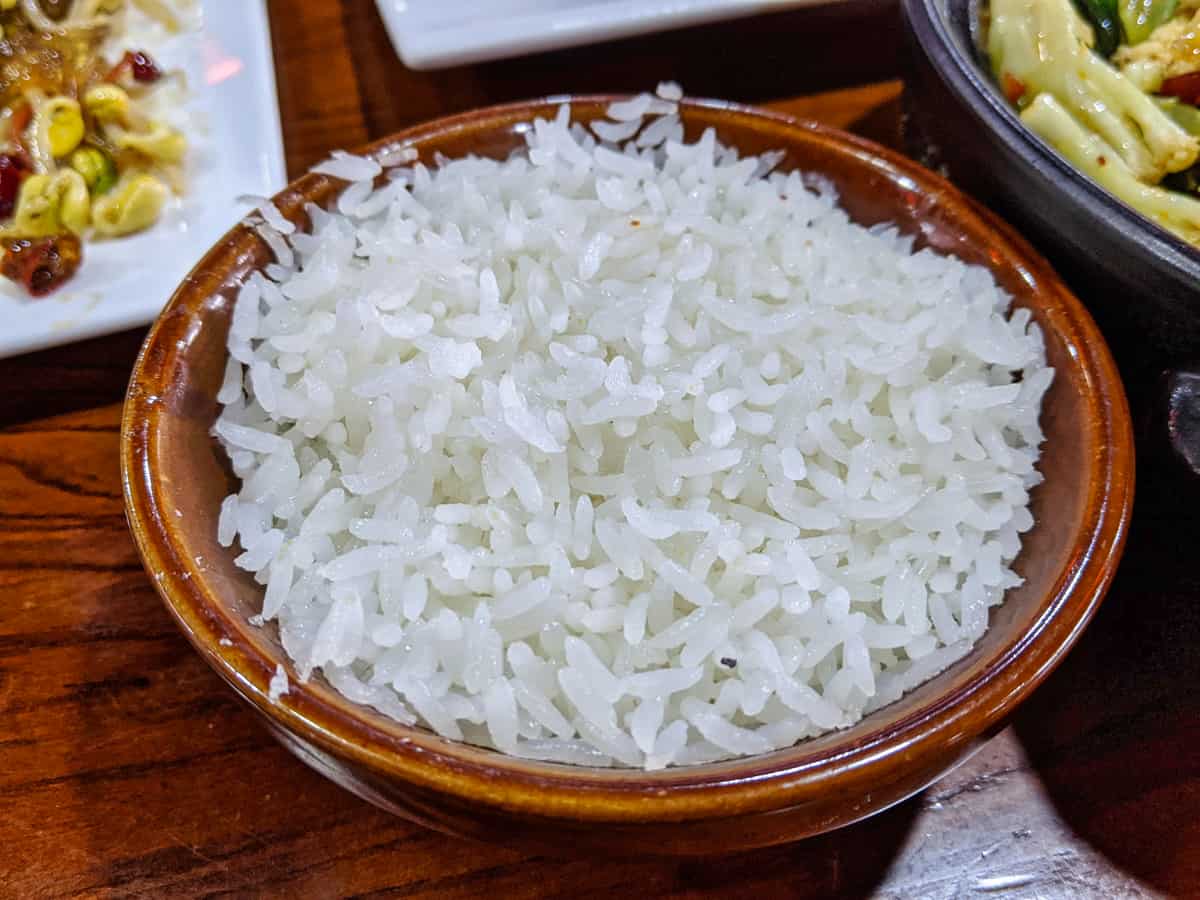China Discovery Tour
Xian | China
06 Jan 2020 | Mon
Day 10 of 18
Lunch | Restaurant near Big Wild Goose Pagoda
We had lunch at a traditional Chinese restaurant near Big Wild Goose Pagoda (sorry, we didn’t get the name). The restaurant was located just a short walk from the pagoda and offered a variety of dishes made with fresh, local ingredients. The menu includes both traditional Chinese dishes and more modern fare, so there is something for everyone to enjoy.
Our guide, Rainbow, selected several interesting dishes, including a local favorite – Chinese Burger (Rou Jia Mo, which means “meat in a bun”). Three of the dishes were varieties of stir-fried vegetables; bean sprouts, onions peppers & noodles, eggplant, peppers and long beans, and cauliflower, peppers & greens and white rice.
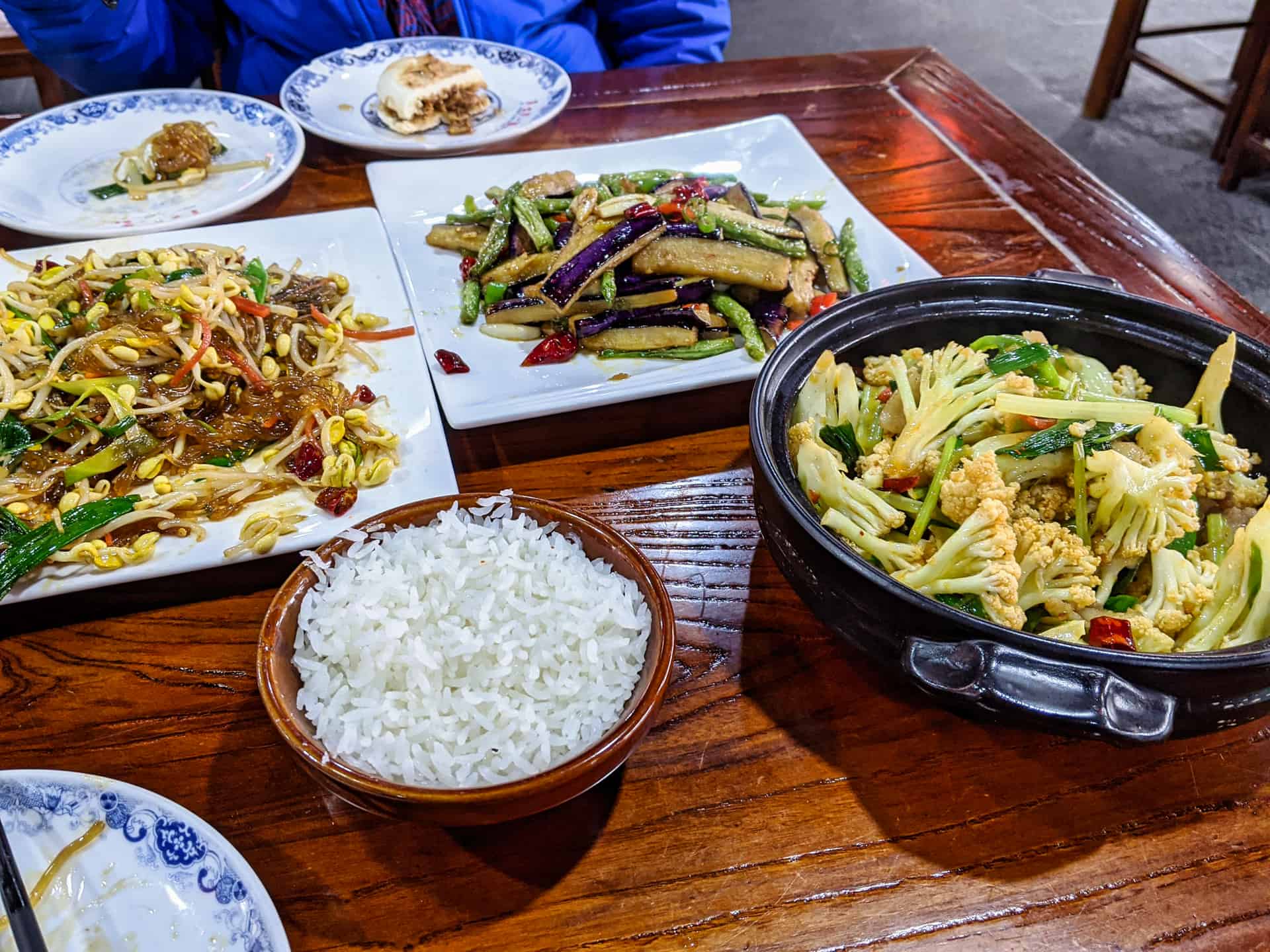
The Chinese Burger reminded us of something similar back in the US called Sloppy Joe’s – saucy seasoned ground meat served on a hamburger bun. However, the Chinese version is served on a very dry, thin, tasteless bun. The season minced pork was tasty, but the dry, tasteless bun was not too appetizing. Overall, though, it was pretty good.
